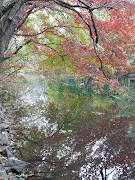 |
| "Lost in Vietnam" by Jan Barry |
Recently, I took up painting. It was an awkward feeling. I
can’t draw a straight line. I dropped by a Vet Center art workshop during the
summer to see what some friends were doing, and the woman running the program
handed me a bag of paints and brushes.
The other guys—mainly retiree Vietnam
vets and a quiet young fella who did combat tours in Afghanistan
and Iraq—were
working seriously amid light-hearted banter on a wide assortment of art work. What
could I do? I spent several Tuesday morning sessions doodling on an idea that
didn’t work out. Meanwhile, the other guys were lining the main hallway at the Vet Center
in an office park in Secaucus,
NJ with arresting paintings of
war scenes, nightmares, vibrant city scenes and soothing landscapes.
I’m a writer. I can paint with poetry. I once lived with a
highly accomplished artist. But I was stymied as to what to do with an artist
brush.
But watching the other vets encourage each other to try
various media—pencil sketches, charcoal drawings, acrylic paint, water
colors—an idea emerged to convey the vastness of the jungle-covered mountains
in Vietnam
and depict how hard it was to find a plane when it crashed in such terrain.
I found water colors worked for what I had in mind, because
I could paint over my mistakes as I layered in peaks and ridges and swirls of
monsoon rain in a rough facsimile of this corner of the world I haven’t seen in
nearly 50 years. That intense focus brought back vivid memories of being a
radio specialist in an Army aviation unit that lost planes and aircrews in
those mountains.
Meanwhile, the other guys were turning out a growing gallery
of art works that caught the attention of other vets coming to the Vet Center
for therapy appointments. One of those vets talked with someone who knew
someone who runs an art gallery. And before long, an art show was being
organized at the Brennan Gallery in the Justice William J. Brennan Court House
in Jersey City, NJ.
The “War & Peace: Art by Military Veterans” exhibition opened
this week in the rotunda of the historic court house. Lawyers striding through
between courtroom rounds stopped to take a look. Sheriff’’s officers and
janitors dropped by to check it out—and then proudly pointed out to vets the stunning
murals of historic figures in the Hudson River city’s early years displayed on
corridor walls circling the marble columned rotunda.
Guided by Angela Maio, a family therapist at the Secaucus Vet
Center, participants in
the vets’ art workshop explored a variety of media to probe, uncover and convey
hard-to-express experiences.
“After many years of doing talk therapy with veterans, I
realized that another more powerful outlet was needed.” Maio said in a news
release statement. “The ‘Paint Your Pain’ Art Group has had a healing
cathartic effect on participants’ combat stressors. Several members have
expressed the feeling of finally finding closure to their nightmares and to the
Vietnam War.”
One of the most stunning works is a painting of a “Point
Man” on patrol raising his arm, signaling other GIs (and viewers) to “follow
me” into a murky mist in a jungle clearing. The artist, Barry Jensen, a retired
carpenter who jotted in a sketchbook during the war, was wounded while serving
with a long range reconnaissance patrol unit in Vietnam.
One of the most creative commentaries on what the art
workshops mean to these men is a water color titled “Forty-Five Years Later,”
by Joe Lis, a combat infantryman and retired nurse. It shows several vets
working on art pieces under the hovering blades of a military helicopter, from
which one vet is set to jump waving a paint brush, rather than a rifle.
 |
| "Forty-Five Years Later" by Joe Lis |
Other artists with works on display include Jim Fallon,
Michael Eckstein, Frank Wagner, Tom Sears, Walt Nygard, and Wilson Montaleza.
Montaleza served in the US Army in Afghanistan
and Iraq.
The other vets served in Vietnam
in the Army or Marines.
For more information:











